Alexandra Palace: How it's survived fires, bankruptcy and even gang warfare in 150 years as London's 'palace of the people'
Alexandra Palace has suffered every imaginable disaster, yet remains enduringly popular even a century and a half after its official grand opening. Martin Fone takes a look at the history of one of Britain's great public buildings.
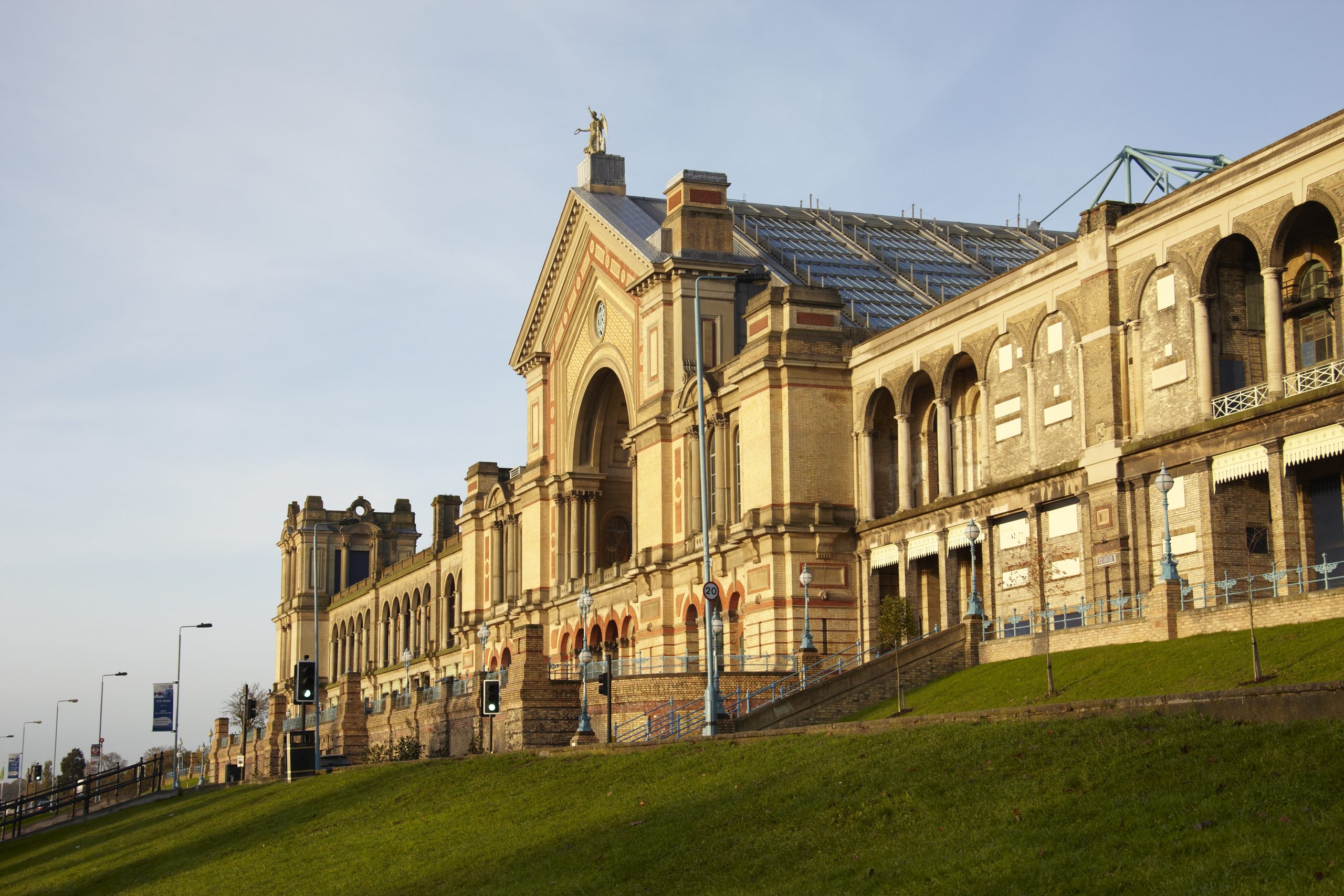

Dominating the north west London skyline, Alexandra Palace and its Park stands on ground that once was Tottenham Wood, a vestige of the Great Forest of Middlesex whose deforestation began in earnest in the early thirteenth century. One of the last refuges for boars, stags, and wild bulls in the area, by the time it was enclosed to allow King James I to indulge his passion for hunting, its 4,666 trees covered 388 acres, according to the Earl of Dudley’s survey in 1619.
Unable to withstand the pincer attack from the growing demand for fertile, agricultural land and timber for construction, when it was auctioned as a manorial estate in 1769, 367 acres had been cleared and cultivated and by 1843 just thirty-nine perches of the original Wood remained. The land, now known as Tottenham Wood Farm, was put up for sale in 1856 when its owner, Thomas Rhodes, Cecil Rhodes’ great uncle, died.
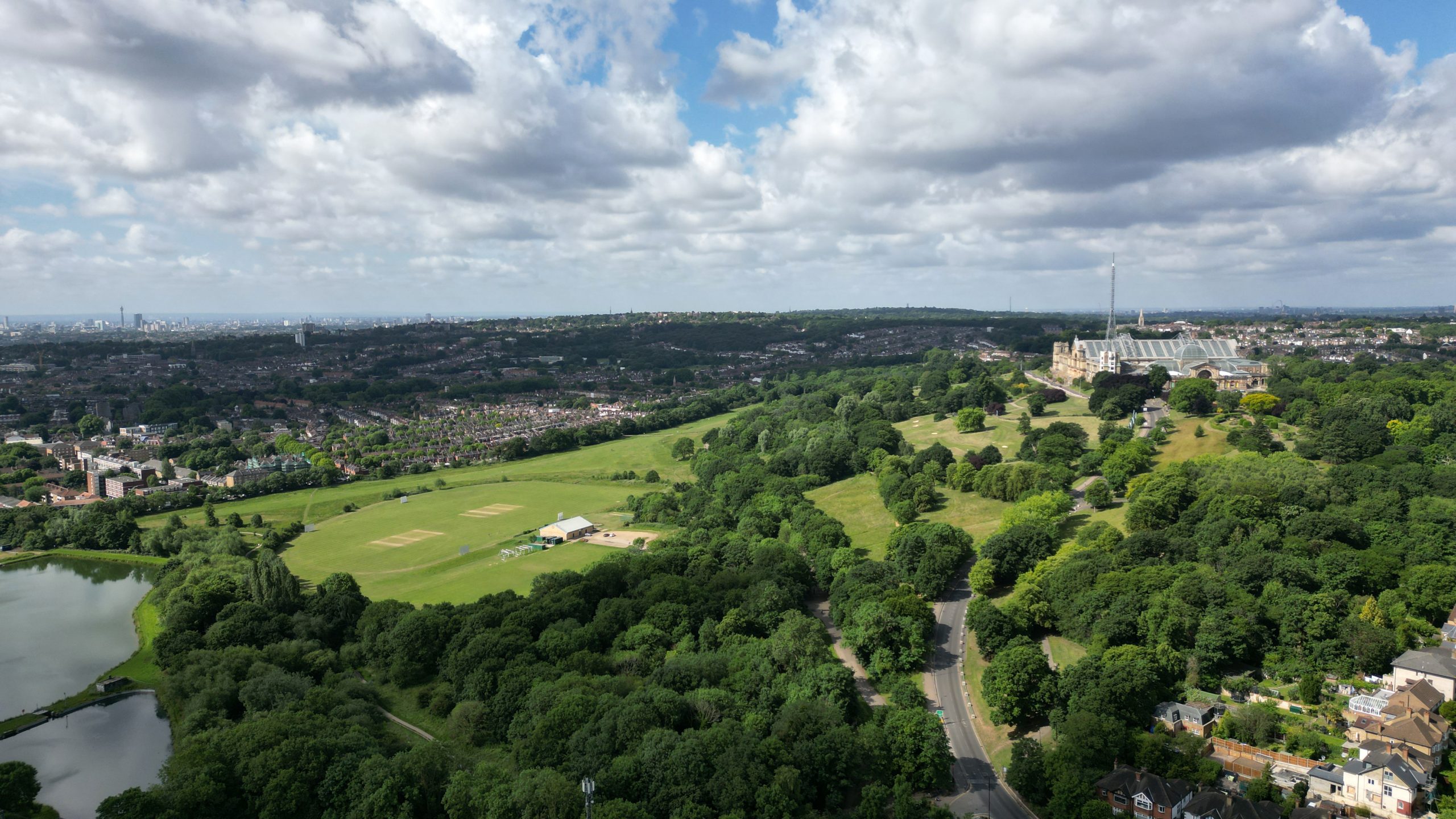
One person who had grand designs for the area was designer and architect, Owen Jones. As a Superintendent of Works at the Great Exhibition of 1851, he had responsibility for decorating Paxton’s cast iron and glass palace and for arranging the exhibits inside. He went on to design its décor and layout when it was moved to Sydenham.
There is an old proverb ‘you shall as easily remove Tottenham Wood’, meaning that something was unachievable, which seems remarkably apposite when considering the early attempts to redevelop the area. Fired by the success of the Crystal Palace south of the river, Owen’s dream was to construct a ‘Palace of the People’ for the enjoyment of north Londoners.
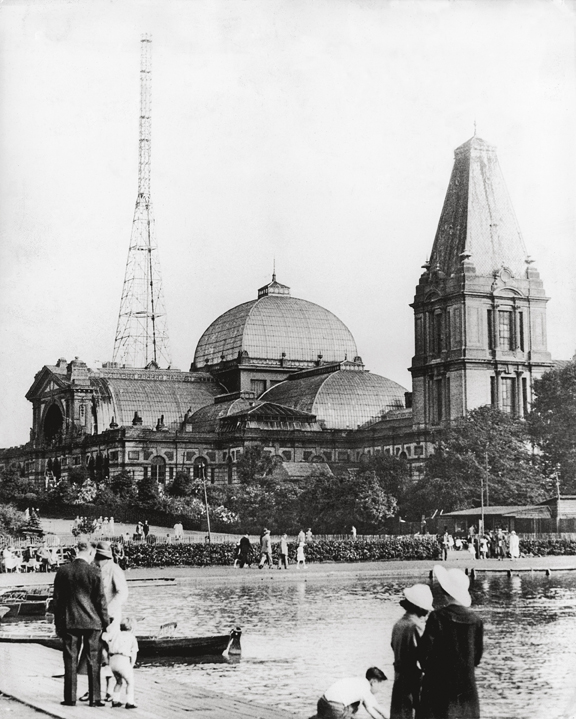
Tottenham Wood Farm seemed an ideal location, but despite submitting detailed plans in 1858, his initiative failed to attract support. The North London Park & Land Co’s attempt four years later to create a park and a housing development on the land also came to naught.
The Alexandra Park Company Ltd did, though, succeed in acquiring around 220 acres to build sports and recreational facilities for the area’s burgeoning population. A Tudor-style banqueting hall, later known as The Blandford Hall, was the first major structure to be built there, in 1864, and from 1868 the Park was the home of what for over a century was London’s only racecourse. It was deeply unpopular with jockeys because its layout required horses to run around a tight circle known as ‘The Frying Pan’ and then along a sloping straight. Many riders and horses were injured.

Nevertheless, it was a hit with the public, meetings regularly attracting crowds of up to 30,000. Some visitors were less than savoury. The Scotsman on April 4, 1921, reported on a Peaky Blinders style clash on the course, the latest in a ‘feud between a Midland gang and another set of men’, with two hospitalised and one arrest. The last meeting was held on September 8, 1970, in front of 2,749 spectators, the course being unable to meet the stiffer safety requirements prevailing at the time.
Sign up for the Country Life Newsletter
Exquisite houses, the beauty of Nature, and how to get the most from your life, straight to your inbox.
Work started on ‘The Palace of the People’, the centrepiece of the park and the manifestation of Jones’ vision, in 1864.
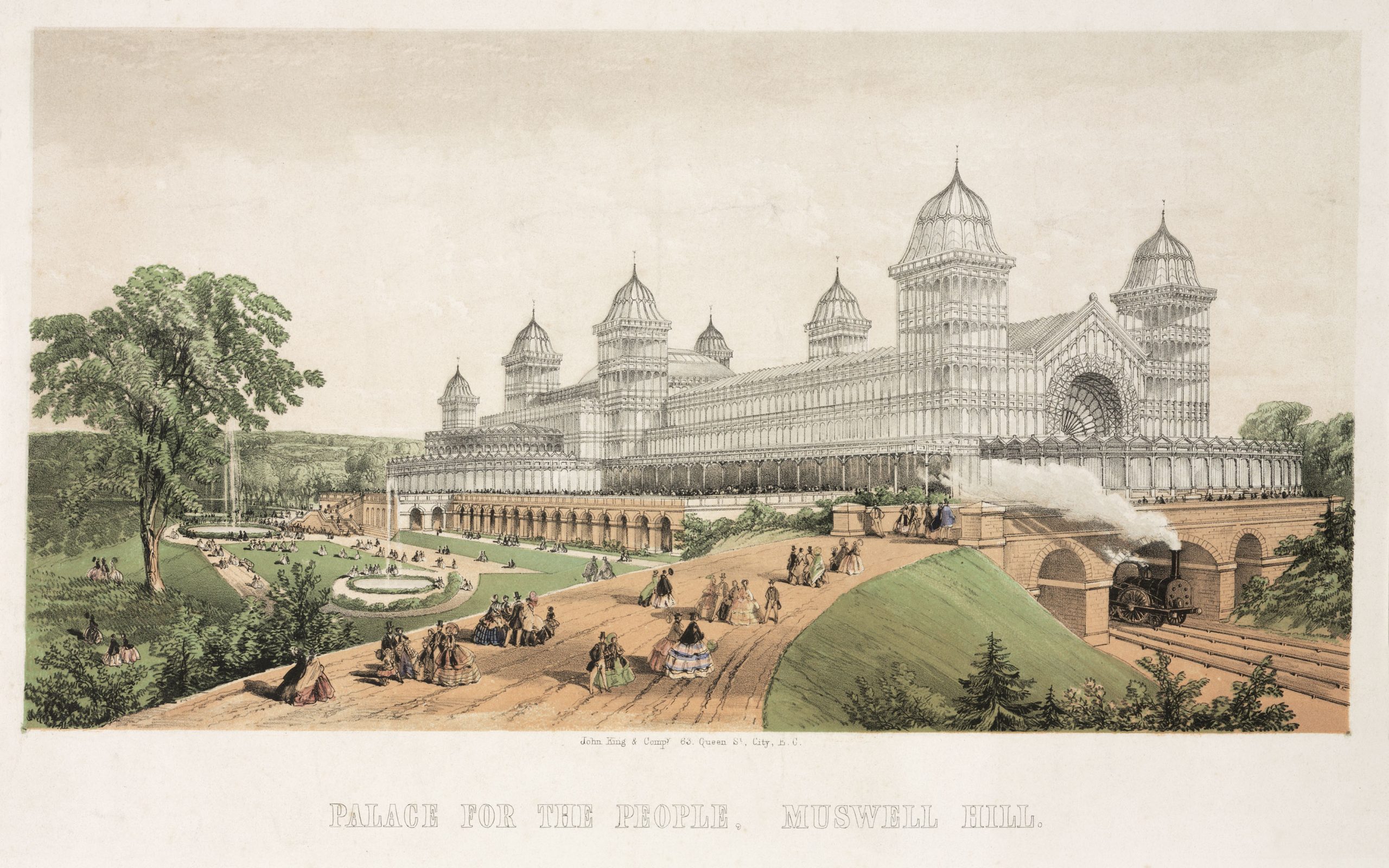
Designed by Alfred Meeson, its construction recycled much of the material used to build the International Exhibition held in Kensington in 1862. Even so, financial difficulties blighted the project, and it took nine years to complete the Palace. Its long-anticipated opening, on May 24, 1873, Queen Victoria’s 54th birthday, was celebrated with concerts, recitals, and fireworks.
Before a sod was cut and a foundation stone laid, the park and its putative palace were renamed in honour of Princess Alexandra of Denmark, who in March 1863 had married Albert Edward, Victoria’s eldest son and heir to the throne. Enormously popular, she was destined to become the longest serving Princess of Wales. In a curious instance of ironic circularity, the Palace of the People was renamed after a Princess of Wales while a later titleholder was to be dubbed the Princess of the People.
The Alexandra Palace was a roaring success, attracting thousands of visitors, many of whom travelled directly there on the Muswell Hill Railway’s newly constructed line. However, just sixteen days after the grand opening, tragedy struck: fire.
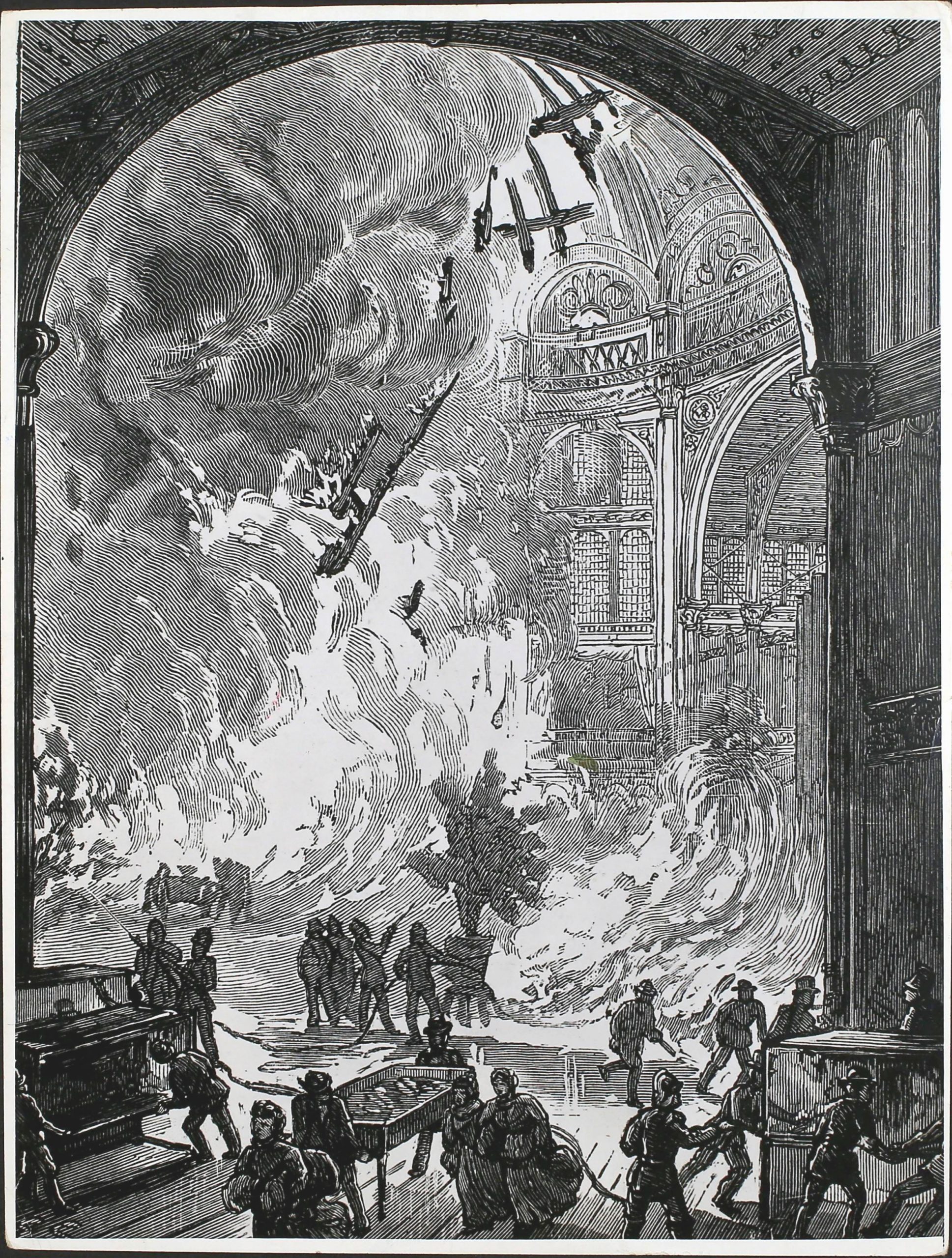
The Palace was burnt to the ground in a fire which cost the lives of three staff members and destroyed much of the interior, including a valuable collection of 4,700 pieces of historic and valuable English pottery and porcelain.
Only the outer walls remained, which became an unanticipated visitor attraction with crowds flocking to the site to see them.
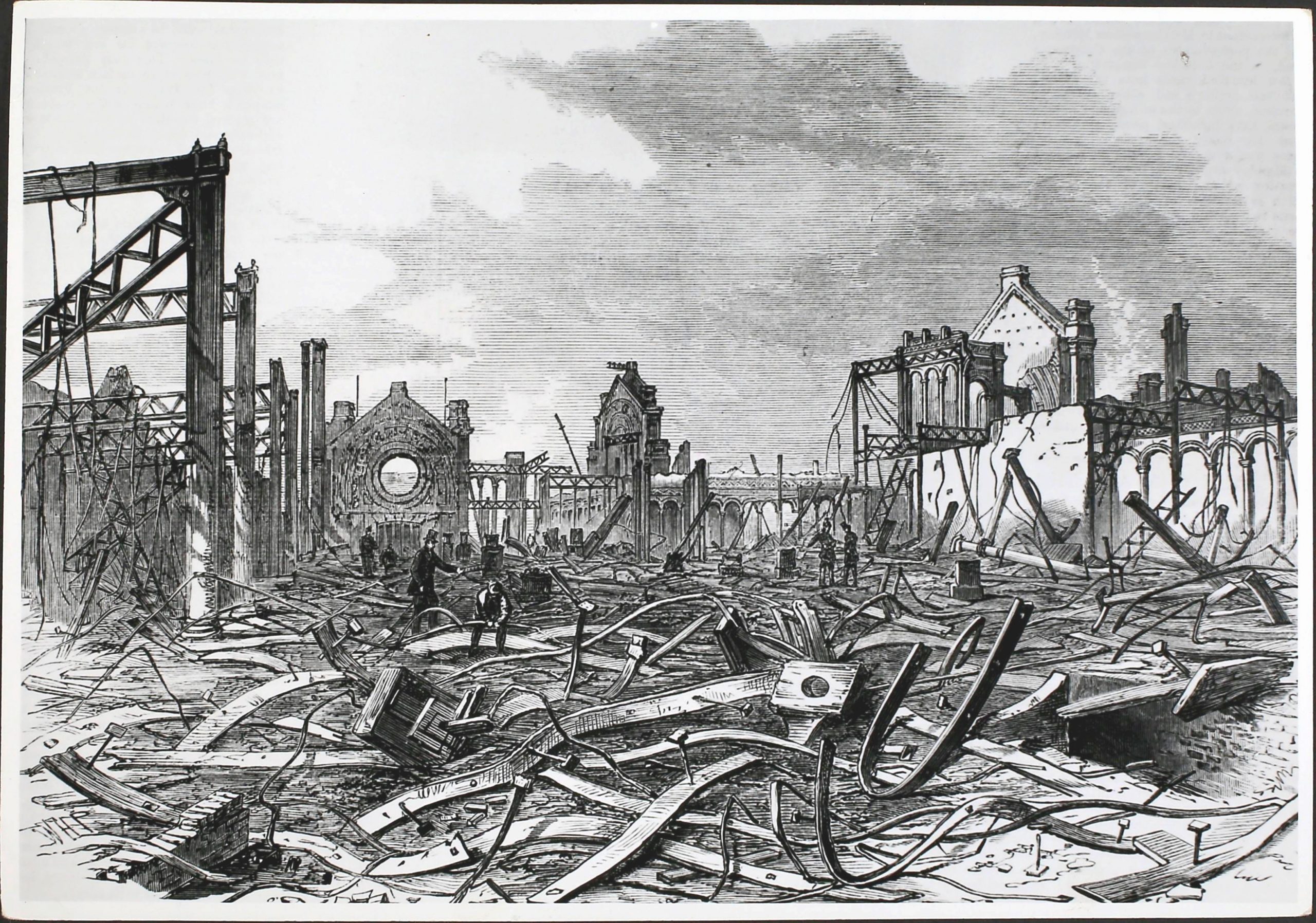
The concept proven, a new Palace was quickly built, opening its doors to the public on May 1, 1875. Designed by Meeson’s partner, John Johnson, and occupying seven and a half acres, it featured a Great Hall which seated 14,000, a Henry Willis organ, one of the largest in Europe at the time, a Palm Court, a 3,000-seater theatre modelled on Drury Lane, a concert hall seating 3,000, which later became a roller-skating rink, several museums, and various banqueting suites and refreshment facilities.
The park was redeveloped too, with a trotting rink and cycle track built within the racecourse’s perimeter. Amongst the park’s other attractions were a cricket ground, ornamental lakes, a Japanese village, tennis courts, a permanent fun fair, and, adjacent to the New River Reservoir, an open-air swimming pool.
As well as its permanent attractions, Alexandra Palace and its Park hosted temporary exhibitions and stage acts, some of which were epic, ground-breaking, or simply bizarre. In 1880 the lake was illuminated as the Palace’s choir performed as Singing Gondolas, an event so popular that the park was dangerously overcrowded, and extra performances had to be arranged, while in 1888, visitors were treated to the largest panorama picture in London, The Siege of Sevastopol, fresh from the Champs Elysée.
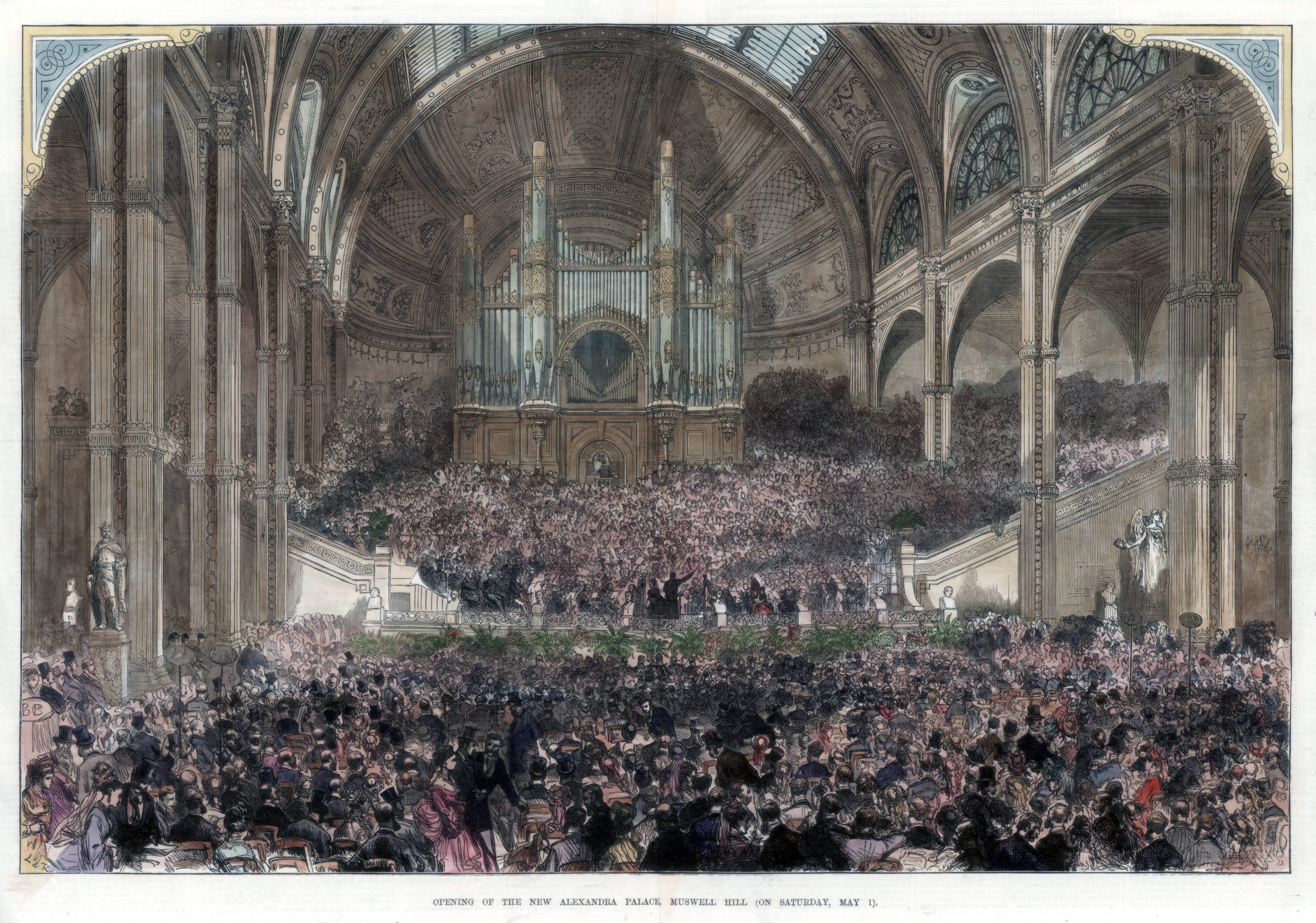
For fans of the outré, in 1888 Miss Alice Webb performed ‘underwater feats in a crystal tank’, which seemed to have consisted of eating, drinking, sewing, peeling an apple, smoking, and writing. For the more adventurous at heart a switchback railway was installed in 1895.
Alexandra Palace’s financial fortunes were always a rollercoaster ride, losses forcing it to close for two years in 1889, and part of the land to the north of the palace was sold for housing development. To guard against further encroachments, an Act of Parliament was passed in 1900 placing it in public ownership and from 1967 it was granted charitable status.
Ally Pally, as Gracie Fields who performed there regularly dubbed it, saw its fair share of technological innovation. In 1882 Cecil Shadbolt took the UK’s first aerial photograph over Alexandra Palace, curiously omitting, though, to take one of the Palace itself. It was from there that the BBC launched the world’s first full television service on November 2, 1936.
But disaster was never far away. The Willis organ was vandalised in 1918 and not restored and reopened until 1929, while on July 10, 1980 a major fire engulfed the Palace with only the outer walls and the eastern parts of the building surviving.
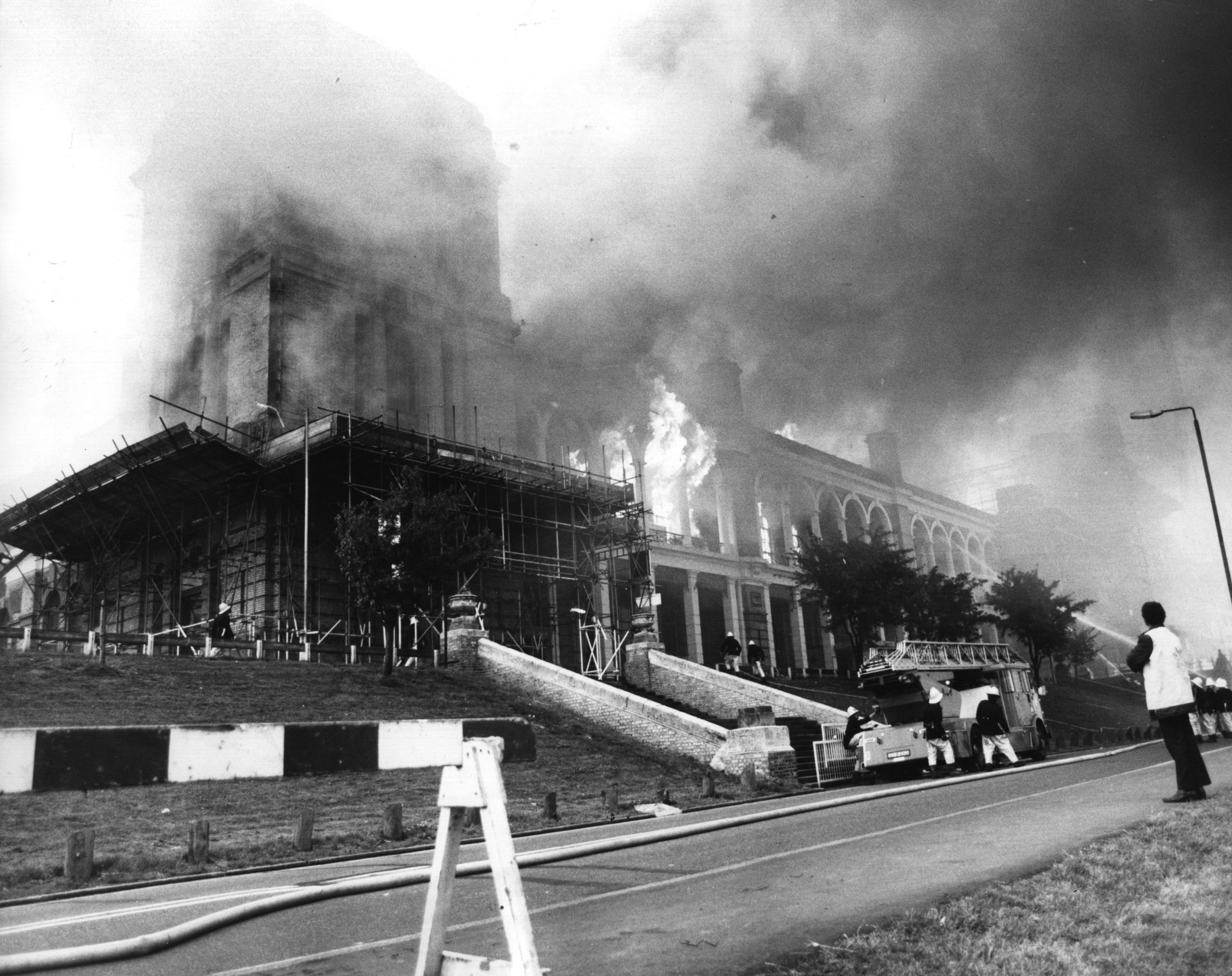
Although the cost of the rebuild exceeded estimate and caused Haringey Council financial embarrassment, it has risen again phoenix-like from the ashes to celebrate its 150th anniversary. Perhaps it has now laid to rest the spirit of Tottenham Wood.
Find out more about Alexandra Palace and its anniversary celebrations at alexandrapalace.com.
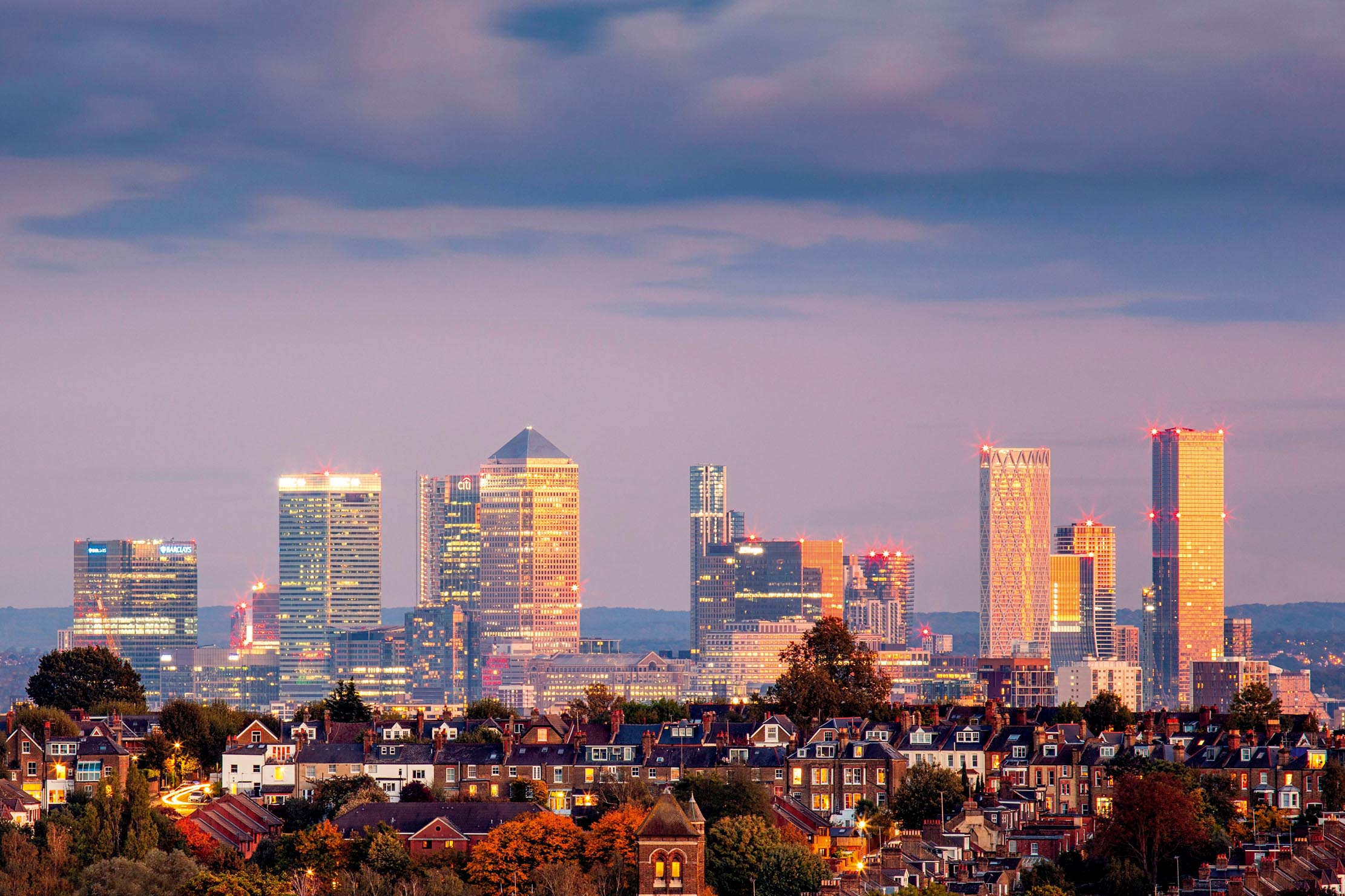
Muswell Hill: The London spot whose views are 'unrivalled for beauty’, with 'a snapshot of the whole of London in front of you'
From Scottish kings to political protest, there’s more to Muswell Hill than its height, says Carla Passino.
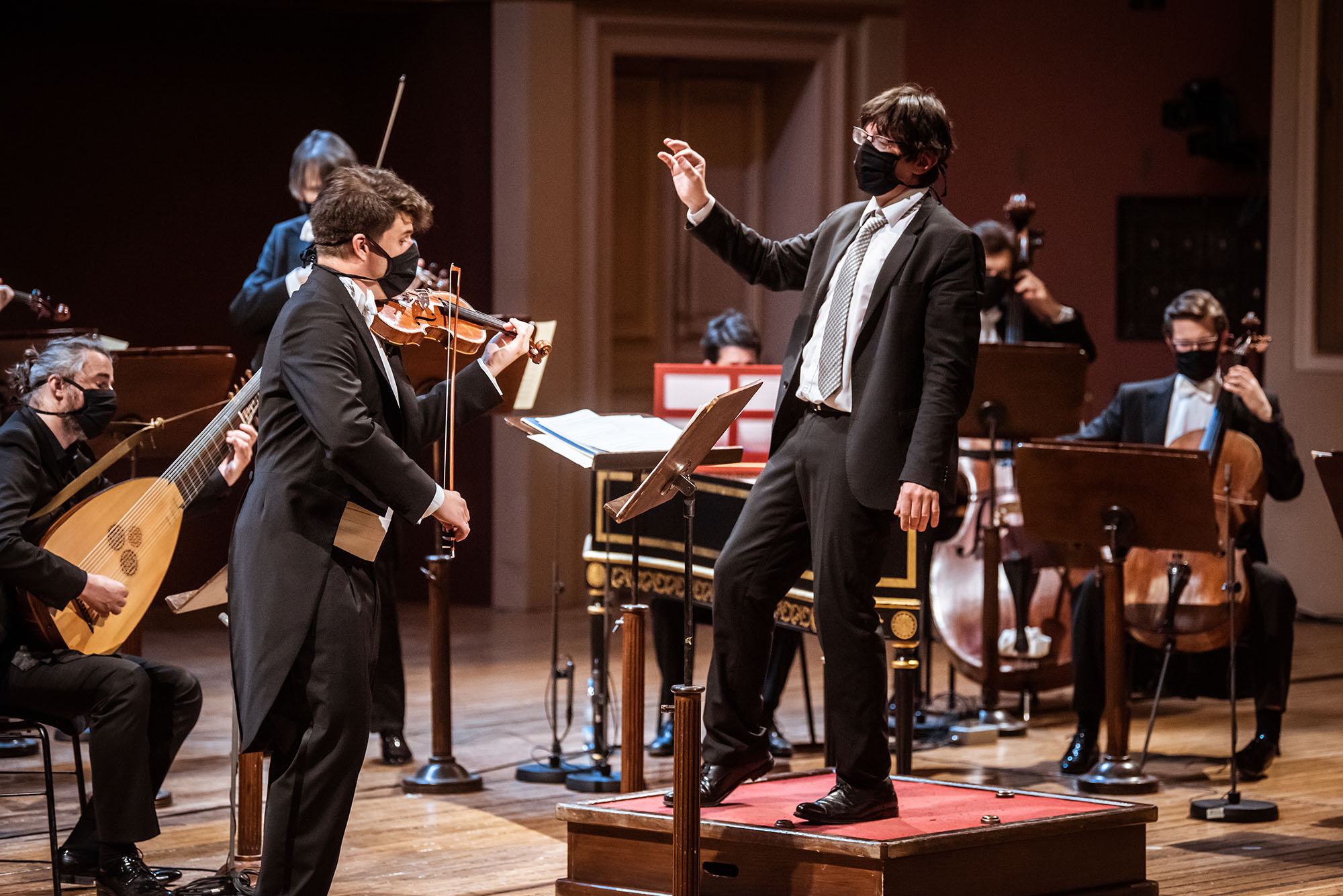
In Focus: Music in a time of Covid-19, from drive-in operas to the 'Spotify of classical'
Classical music has been hit hard by coronavirus, but there are all manner of ways for musicians and music lovers
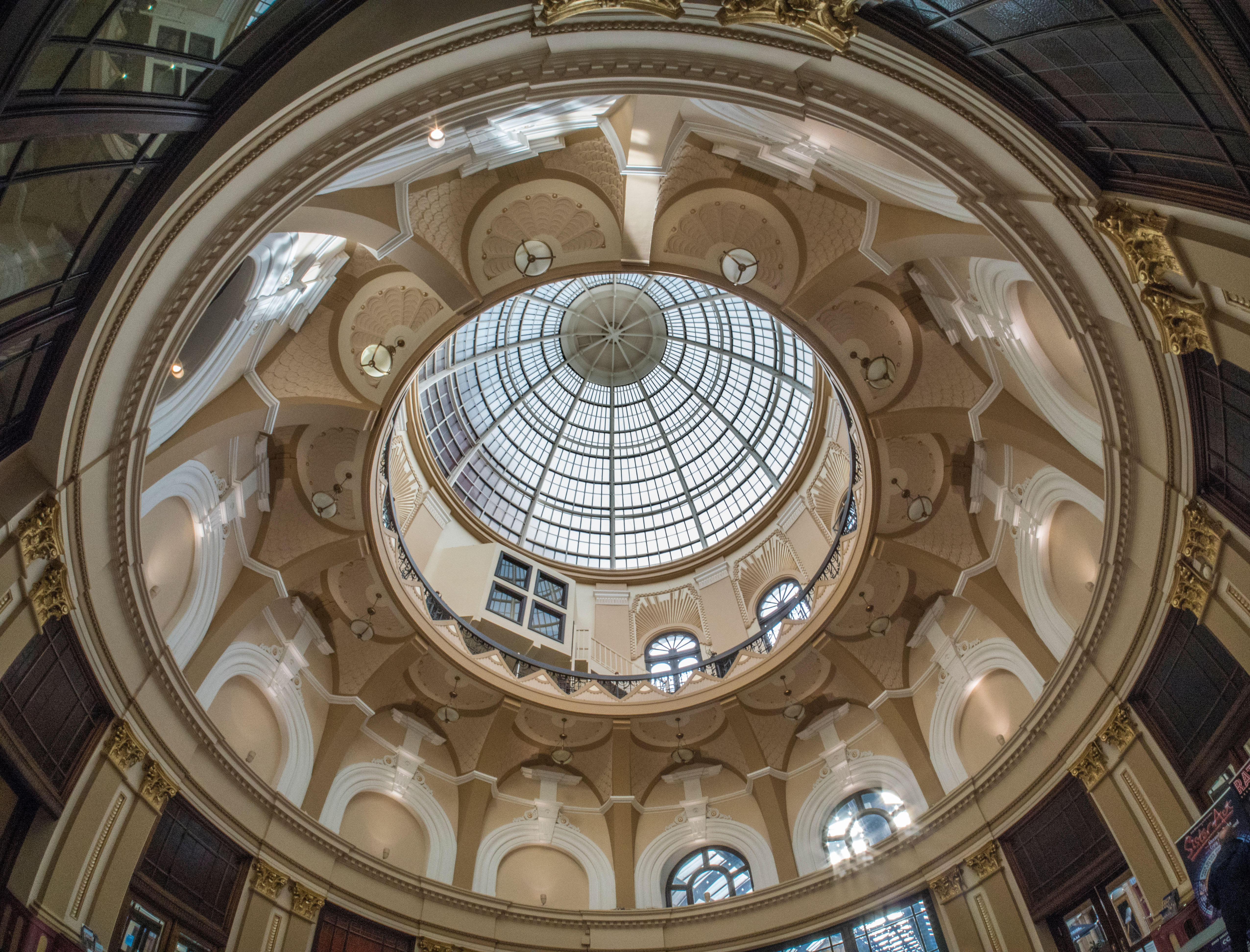
The tale of the finest Winter Gardens in Britain, and what lies ahead for these majestic glass palaces
Winter Gardens have had a difficult late 20th century. What lies ahead for these extraordinary architectural creations, asks Marcus Binney,
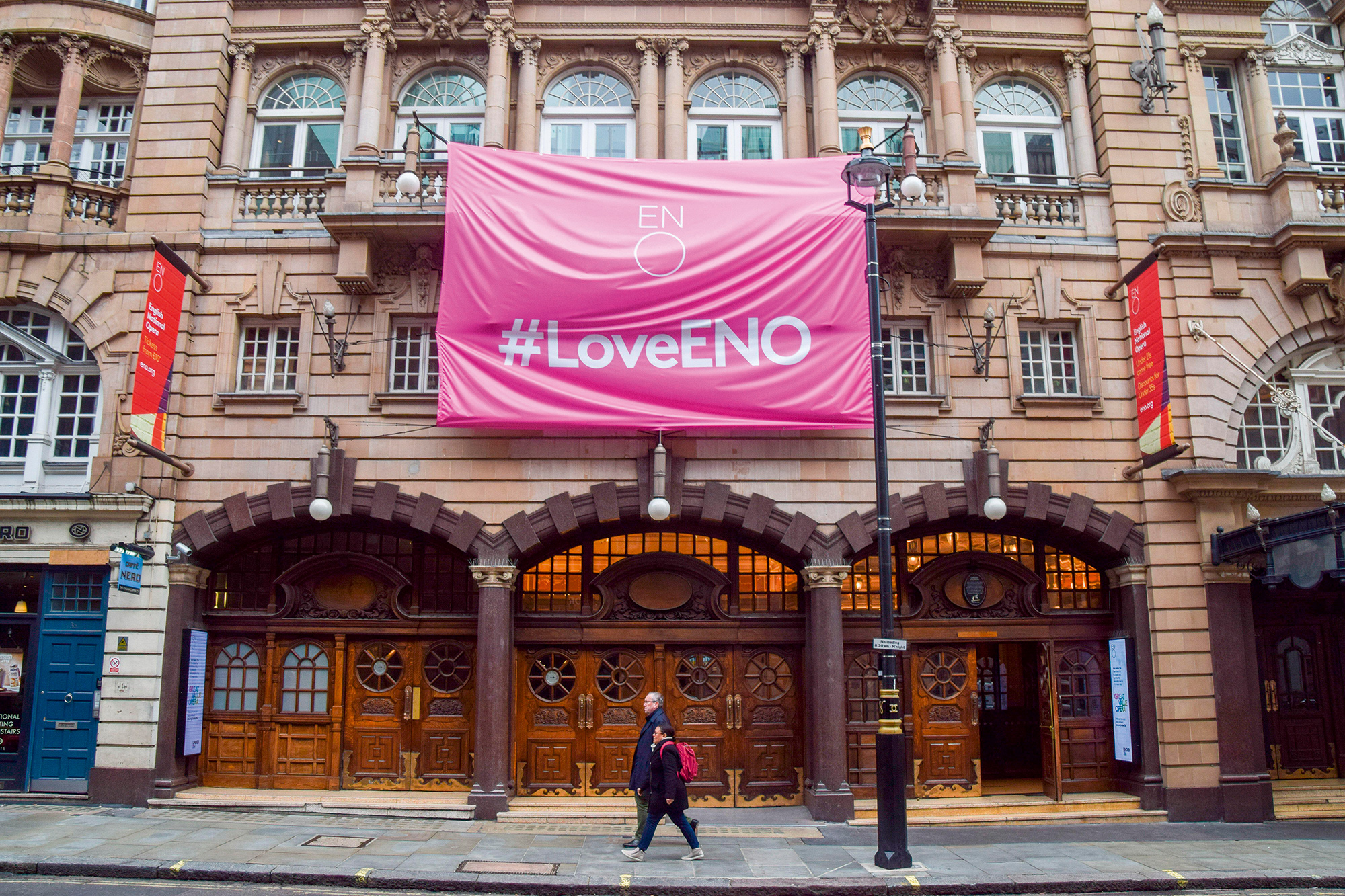
How 'levelling-up' in the Arts has backfired for regional theatres: 'It's the guillotine, not the salami-slicer'
London and the South of England have long been the primary beneficiaries of Arts funding, but is the Government’s latest
After graduating in Classics from Trinity College Cambridge and a 38 year career in the financial services sector in the City of London, Martin Fone started blogging and writing on a freelance basis as he slipped into retirement. He has developed a fearless passion for investigating the quirks and oddities of life and discovering the answers to questions most of us never even think to ask. A voracious reader, a keen but distinctly amateur gardener, and a gin enthusiast, Martin lives with his wife in Surrey. He has written five books, the latest of which is More Curious Questions.
-
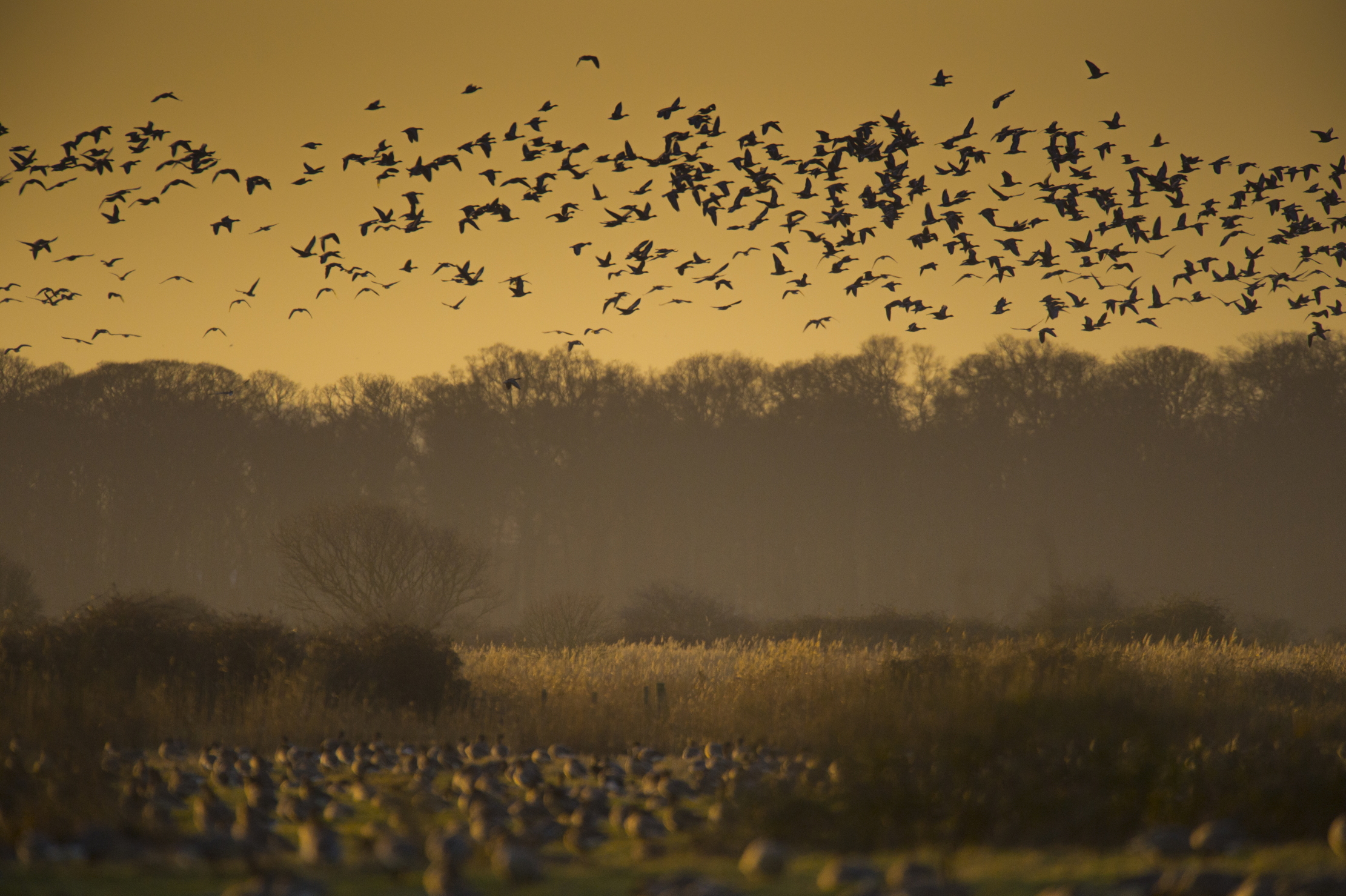 How an app can make you fall in love with nature, with Melissa Harrison
How an app can make you fall in love with nature, with Melissa HarrisonThe novelist, children's author and nature writer Melissa Harrison joins the podcast to talk about her love of the natural world and her new app, Encounter.
By James Fisher
-
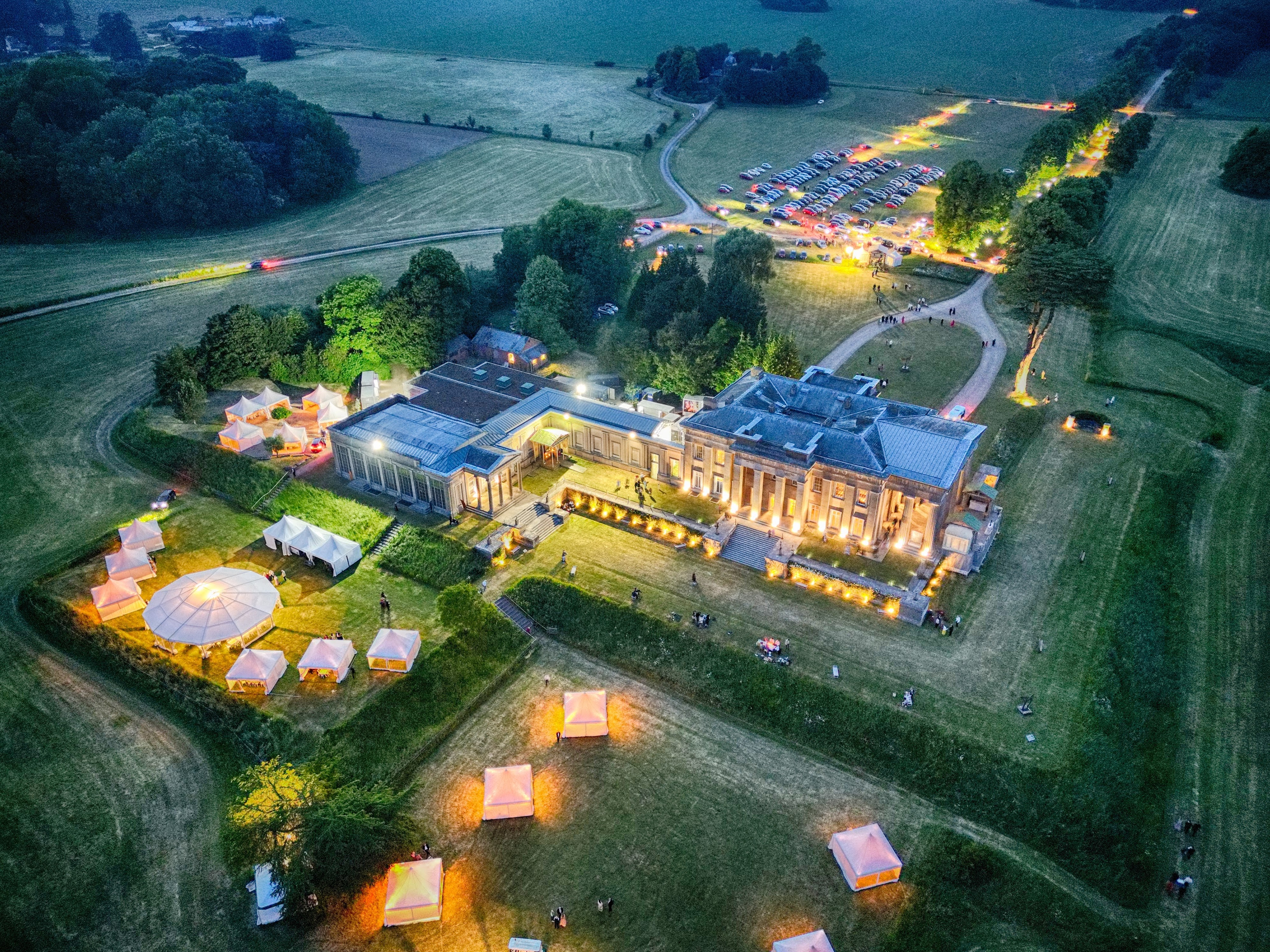 'There is nothing like it on this side of Arcadia': Hampshire's Grange Festival is making radical changes ahead of the 2025 country-house opera season
'There is nothing like it on this side of Arcadia': Hampshire's Grange Festival is making radical changes ahead of the 2025 country-house opera seasonBy Annunciata Elwes
-
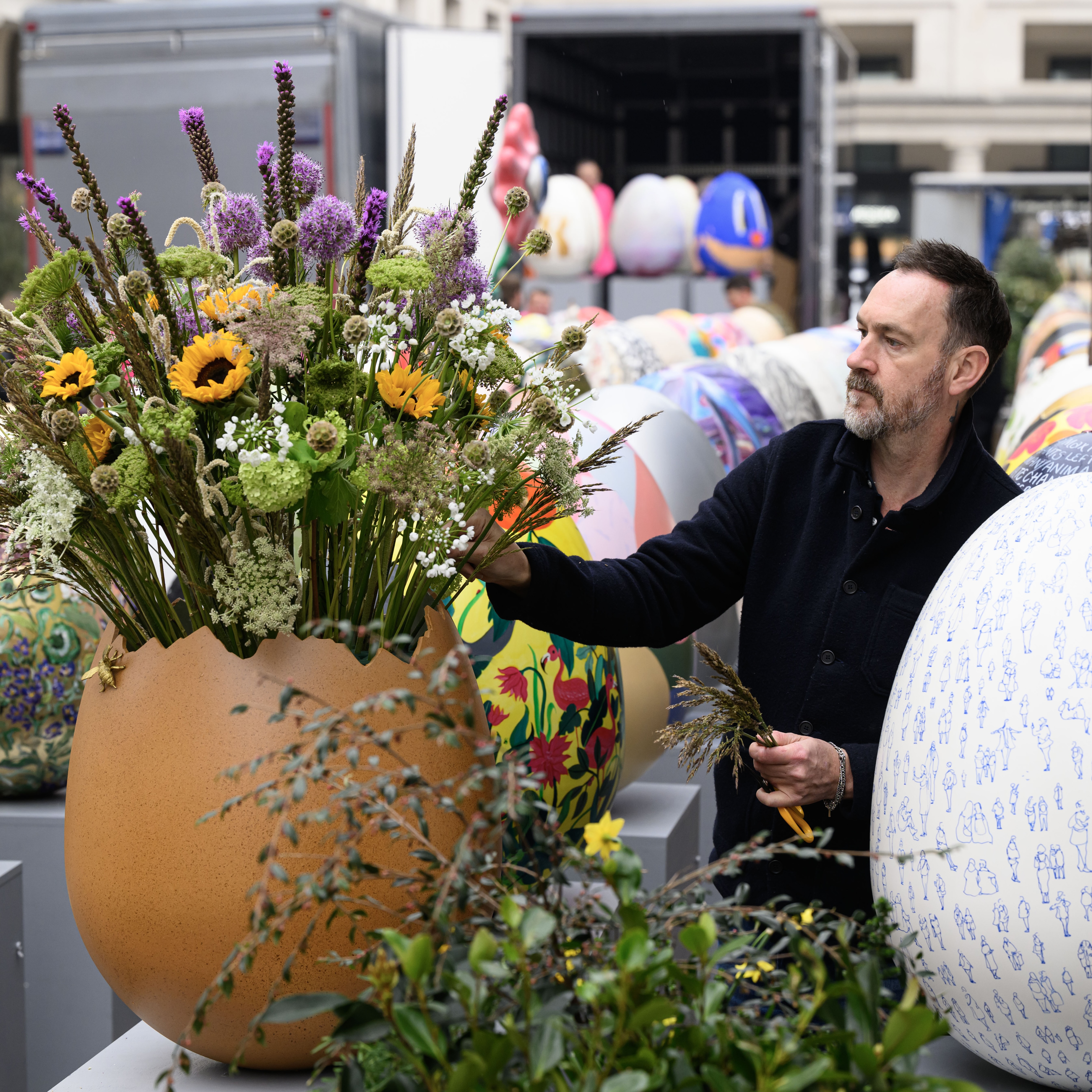 You've gotta catch them all: Everything you need to know about London's giant Easter egg hunt
You've gotta catch them all: Everything you need to know about London's giant Easter egg huntFortnum & Mason, Anya Hindmarch and Chopard are among the companies that have lent a creative hand.
By Amie Elizabeth White
-
 Curious Questions: Why do golf balls have dimples? And why are tennis balls furry?
Curious Questions: Why do golf balls have dimples? And why are tennis balls furry?As the weather picks up, millions of us start thinking about dusting off our golf clubs and tennis rackets. And as he did so, Martin Fone got thinking: why aren't the balls we use for tennis and golf perfectly smooth?
By Martin Fone
-
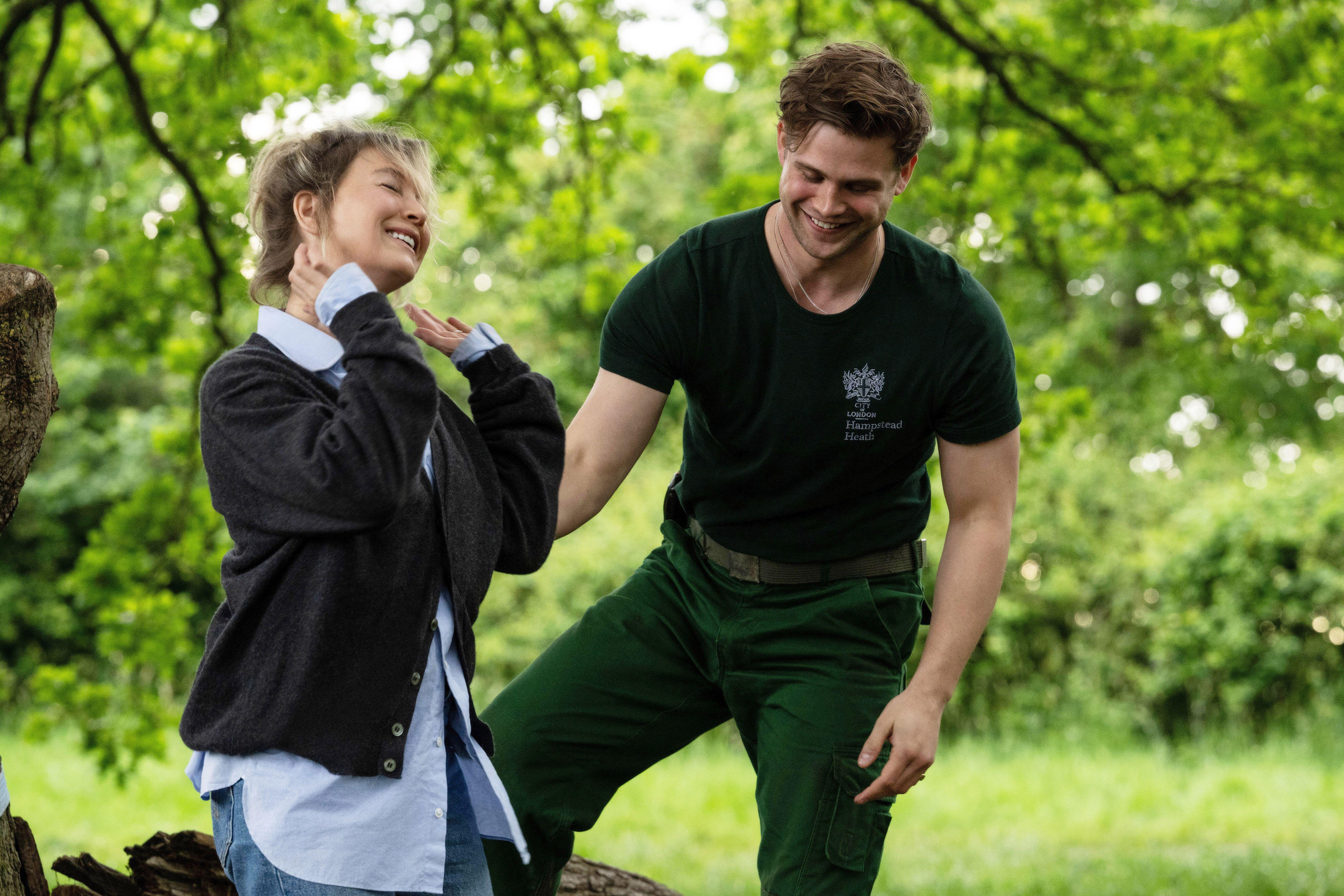 Everything you need to know about Hampstead: The real star of 'Bridget Jones: Mad About the Boy'
Everything you need to know about Hampstead: The real star of 'Bridget Jones: Mad About the Boy'From Protestant Dissenters to Dame Judi Dench, Hampstead has long been synonymous with liberal values and prosperity — which is what makes it different from other parts of London. Now, it's stealing hearts the world over in the latest Bridget Jones film.
By Carla Passino
-
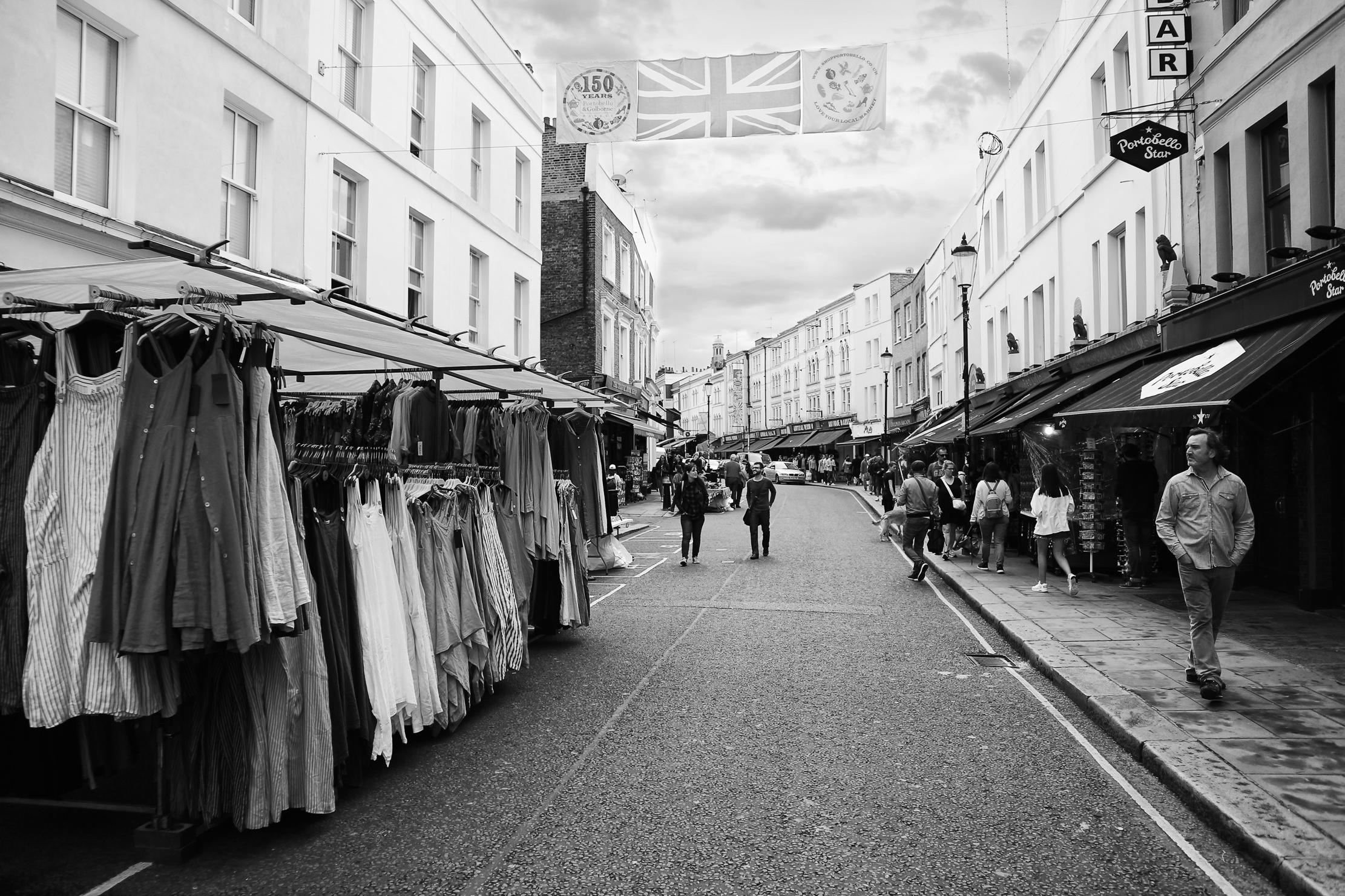 Tricks of the trade: London's best spots for second-hand sales
Tricks of the trade: London's best spots for second-hand salesNeed a mid-century desk? A frock from the 1960s? Here are five London markets that satisfy every taste.
By Arabella Youens
-
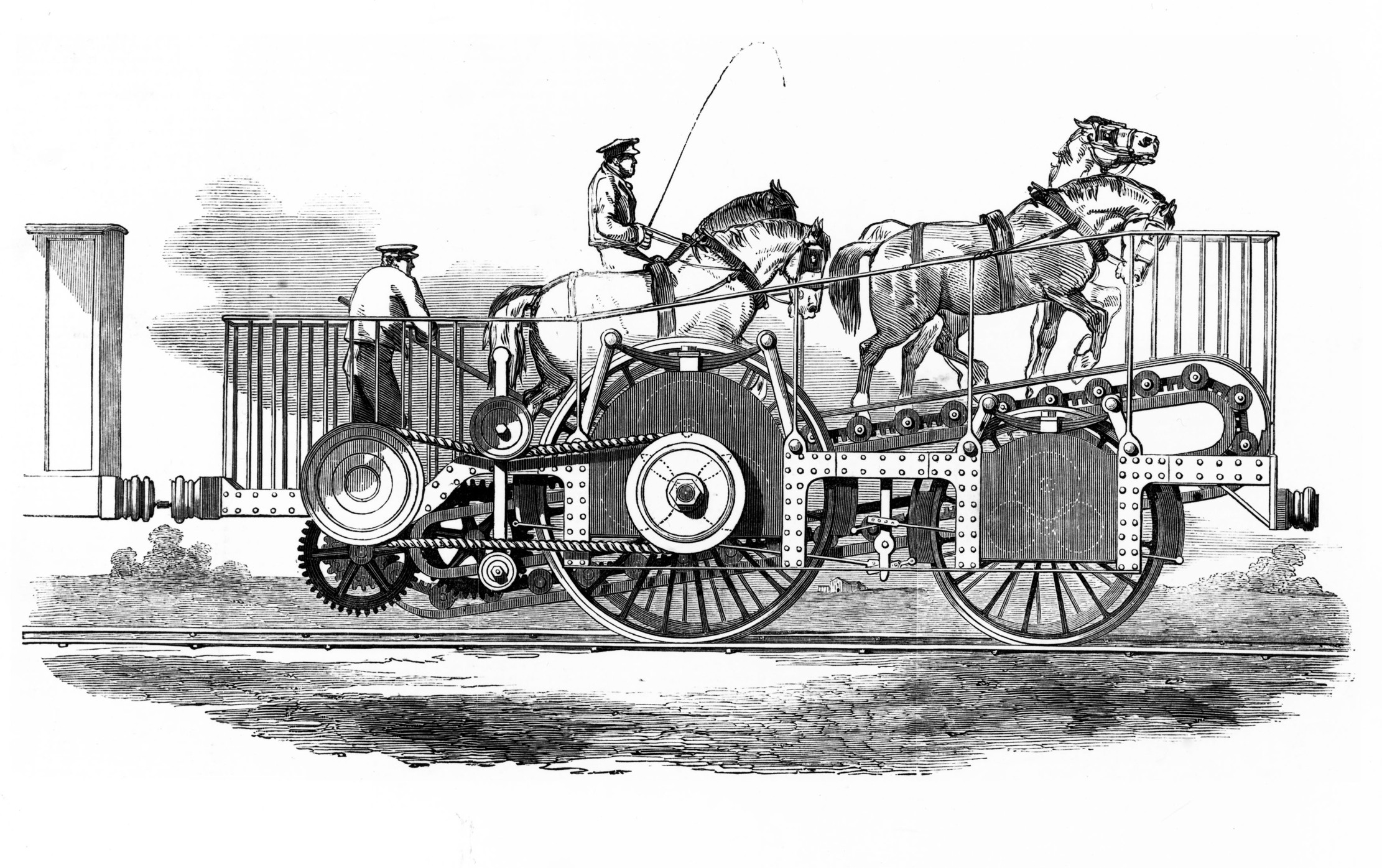 Curious questions: How a horse on a treadmill almost defeated a steam locomotive
Curious questions: How a horse on a treadmill almost defeated a steam locomotiveThe wonderful tale of Thomas Brandreth's Cycloped and the first steam-powered railway.
By Martin Fone
-
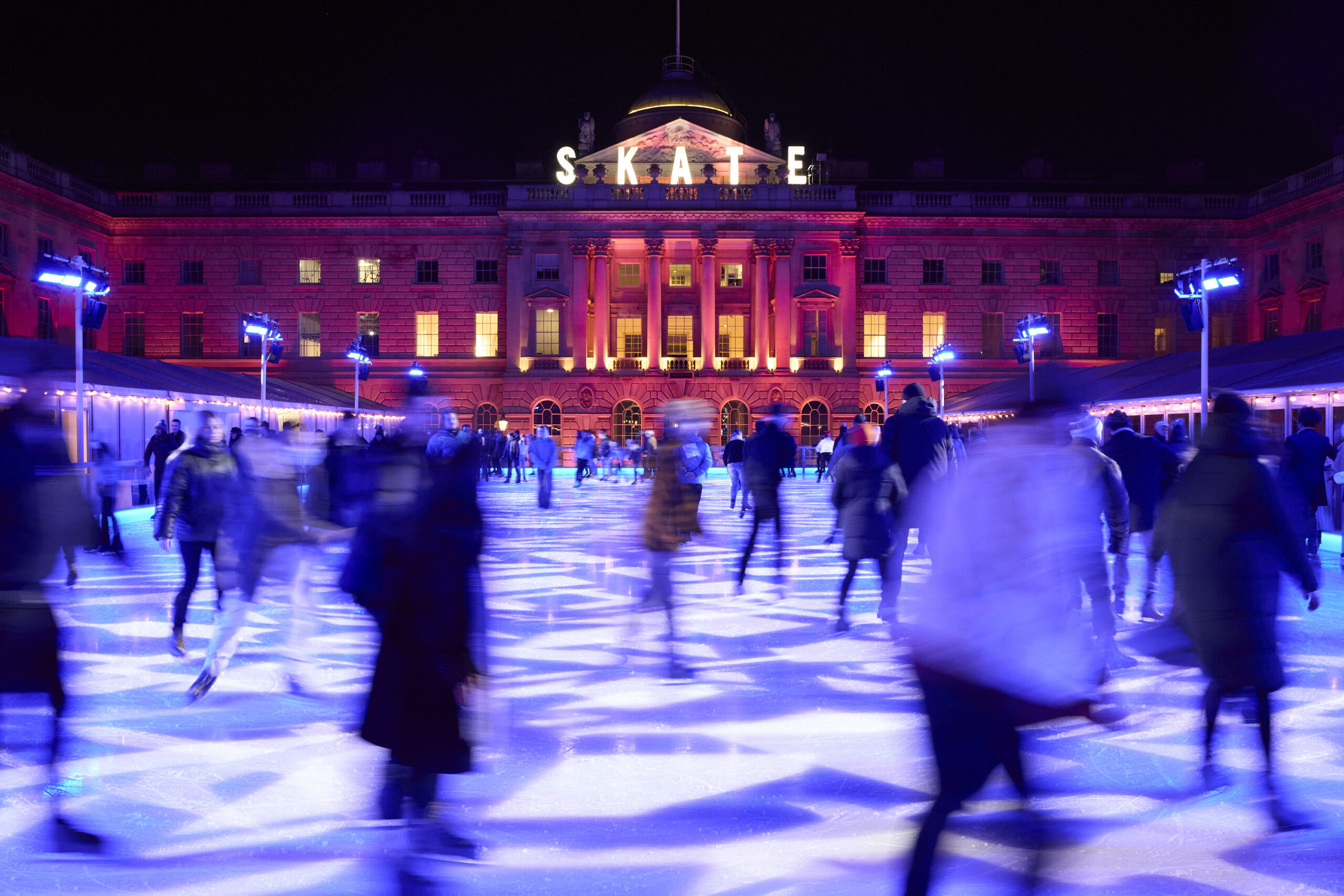 Skate at Somerset House is the friendliest thing you'll ever do in London
Skate at Somerset House is the friendliest thing you'll ever do in LondonRelying on the kindness of strangers is alive, well, and found in Skate at Somerset House on the Strand.
By Toby Keel
-
 You've got peemail: Why dogs sniff each other's urine
You've got peemail: Why dogs sniff each other's urineEver wondered why your dog is so fond of sniffing another’s pee? 'The urine is the carrier service, the equivalent of Outlook or Gmail,' explains Laura Parker.
By Laura Parker
-
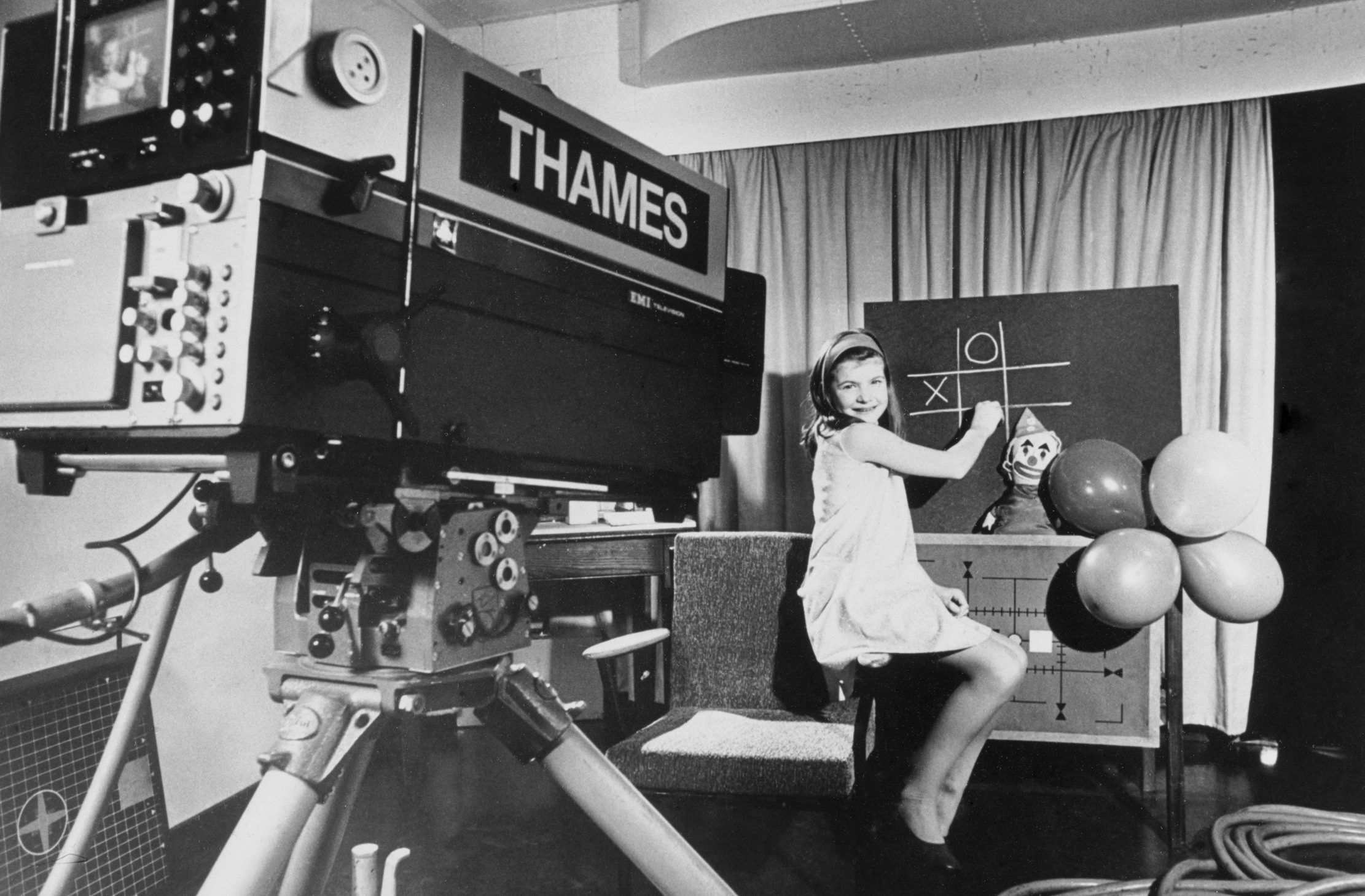 Curious Questions: Which person has spent the most time on TV?
Curious Questions: Which person has spent the most time on TV?Is it Elvis? Is it Queen Elizabeth II? Is it Gary Lineker? No, it's an eight-year-old girl called Carole and a terrifying clown. Here is the history of the BBC's Test Card F.
By Rob Crossan